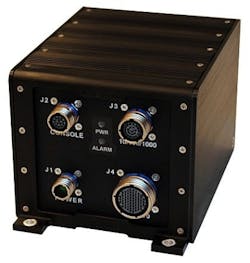Navy takes closer look at helicopter laser sea mine detection system before full-scale production decision
The ALMDS will be among the first airborne organic airborne mine-countermeasures systems fielded, Northrop Grumman officials say. It uses pulsed laser light and streak tube receivers mounted in a pod on the left side of the MH-60 helicopter to provide 3d imagery of the ocean's surface, as well as areas just below the surface where concealed mines pose a threat to surface ships.
The system can operate during the day and at night, and uses the forward motion of the helicopter to generate image data; it does not need complex scanning mechanisms. The ALMDS pod weighs about 820 pounds, is nearly nine feet long, and has a diameter of less than two feet. AMLCD contact data displays on the MH-60's common console and stored on a mass memory unit for later analysis.
The AMLCD program now is in the low rate initial production, or LRIP phase. Overseeing the program are officials of the Navy's Mine Warfare (MIW) Program Office (PMS 495) in the Program Executive Office for Littoral Mine Warfare (PEO(LMW) at the Naval Surface Warfare Center Panama City.
For more information contact Northrop Grumman Battle Management & Engagement Systems online at www.as.northropgrumman.com, or the Naval Surface Warfare Center Panama City Division at www.navsea.navy.mil/nswc/panamacity.
Related stories
-- Ocean mines have nowhere to hide;
-- Northrop Grumman looks to VMETRO for laser mine detection system chassis.
